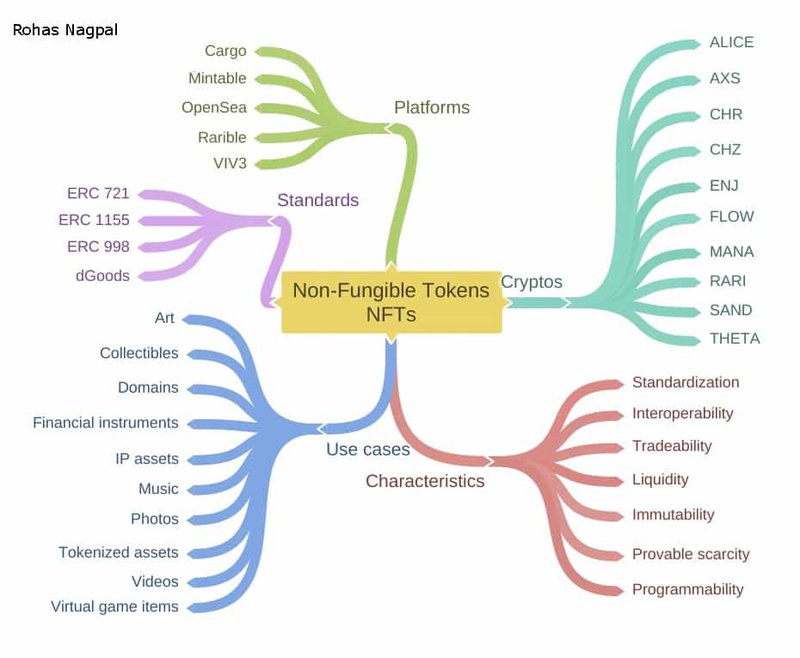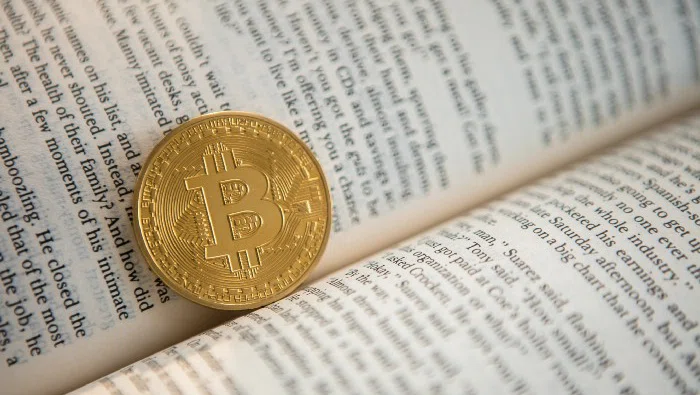The USD balance in your mobile wallet is fungible - every dollar is exactly the same as another dollar. Any 1 dollar can be exchanged for another 1 dollar. Things like real estate and art are non-fungible because no two of them are identical.
Non-Fungible Tokens (NFT) are the crypto versions of things like art, and real-estate. They are used as digital proof-of-ownership of the underlying asset.
1. Frequently asked questions
- What is a Non-Fungible Token (NFT)?
An NFT is a unique token on a blockchain. It can be attached to any asset (tangible or not) to verify its authenticity and ownership.
Example: When you buy a book, you can read it. But you cannot translate it into another language and start selling the translated version. With an NFT, the author can give you translation and other rights. - What is minting?
Minting is the process of tokenizing an asset and creating the NFT. This can be done by the creator of the work or an authorized person. - What are the legal rights of a buyer of an NFT?
Depending upon the NFT, the buyer may get the rights to own, sell, lend, monetize, etc. - Why do we need NFTs
Intellectual property markets have complex licensing & paperwork requirements. NFTs enable quick tokenization and monetization of IP. - What are the types of NFTs
NFTs can be of many types, including:
- art
- collectibles (trading cards, sneakers)
- domains
- financial instruments
- IP assets - trademarks, patents, etc
- music
- photos
- tokenized assets (cars, land, oil)
- videos of iconic events
- virtual game items (avatars, skins, weapons, etc) - Which are some NFT platforms?
- Ethereum: Cargo, Mintable, OpenSea, Rarible
- Flow: VIV3
2. NFT mind map

According to OpenSea's NFT Bible, the characteristics of NFTs are:
- Standardization: Conventional digital assets (in-game collectibles, event tickets, domain names, etc) are very different from each other. But when they are represented as NFTs on public blockchains, they can have common, reusable, and inheritable standards for ownership, transfer, and access control.
- Interoperability: NFTs can easily move across multiple ecosystems, different wallet providers. They are tradeable on marketplaces and can be displayed inside virtual worlds.
- Tradeability: NFTs enable digital assets to move outside their original environments and into marketplaces with sophisticated trading capabilities e.g. eBay-style auctions, bidding, bundling, and the ability to sell in any currency.
- Liquidity: Instant tradeability of NFTs leads to higher liquidity.
- Immutability & provable scarcity: Smart contracts enable the placing of hard caps on the supply of NFTs and the enforcement of persistent properties that cannot be modified.
- Programmability: NFTs are fully programmable and have complex mechanics like forging, crafting, redeeming, random generation, etc.
3. NFT Standards
4. Metadata
NFT metadata can be stored on-chain or off-chain.
In the case of on-chain storage, the metadata is baked directly into the smart contract representing the tokens. The benefits are:
- the metadata permanently resides with the token,
- the metadata can change in accordance with on-chain logic.
In the case of digital art, keeping the metadata on-chain ensures that it will persist even if the original website does not.
In most cases, metadata is stored off-chain because of the storage limitations of Ethereum. In this case, the metadata can be stored on centralized servers (e.g. cloud servers) or InterPlanetary File System (IPFS) – see: https://ipfs.io/
5. NFT cryptocurrencies to watch for
- MyNeighborAlice (ALICE)
- Axie Infinity (AXS)
- Chromia (CHR)
- Chiliz (CHZ)
- Enjin Coin (ENJ)
- Flow (FLOW)
- Decentraland (MANA)
- Rarible (RARI)
- The Sandbox (SAND)
- THETA (THETA)
Rohas Nagpal runs the newsletter Future Money, that you can find here:
https://www.linkedin.com/newsletters/the-future-money-newsletter-6693825900615622656/












